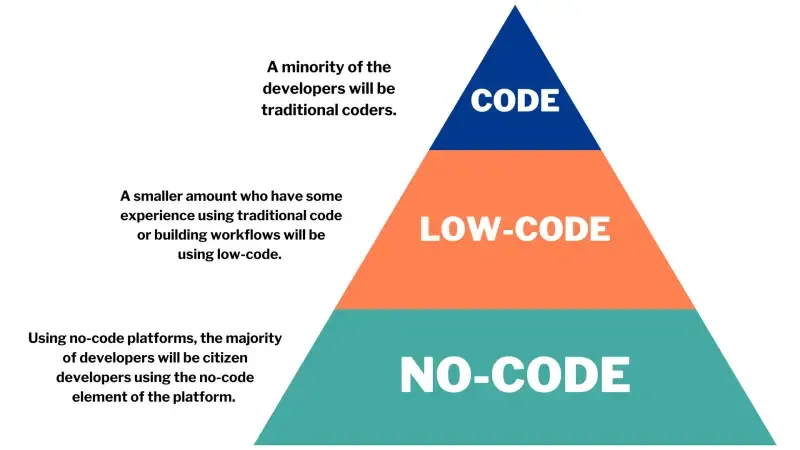The rise of low-code and no-code platforms has been a significant trend in software development, democratizing the creation of applications and systems by enabling individuals with varying levels of technical expertise to build software solutions without extensive coding knowledge.
Here's an investigation into their rise and impact:
Rise of Low-Code/No-Code Platforms:
Demand for Faster Development: Businesses are constantly seeking ways to accelerate software development to meet the rapidly evolving market demands. Low-code and no-code platforms emerged as a response to this need, allowing organizations to develop applications in significantly less time compared to traditional coding methods.
Skill Gap Mitigation: There's a global shortage of skilled software developers, and low-code/no-code platforms help bridge this gap by empowering citizen developers—individuals without extensive programming backgrounds—to create functional software solutions.
Advancements in Technology: Advances in cloud computing, artificial intelligence, and pre-built integrations have made it feasible to create powerful, customizable applications using visual interfaces and configuration rather than manual coding.
Impact on Software Development:
Increased Productivity: Low-code/no-code platforms streamline the development process, reducing the time and effort required to build and deploy applications. This increased productivity enables businesses to iterate more quickly and respond promptly to market demands.
Empowerment of Citizen Developers: Non-technical employees across various departments can now participate in the development process, contributing their domain expertise to create custom solutions tailored to their specific needs. This empowerment fosters innovation and agility within organizations.
Cost Savings: By eliminating the need for extensive coding and reducing the dependency on highly skilled developers, organizations can significantly reduce development costs associated with hiring, training, and maintaining a large software development team.
Flexibility and Agility: Low-code/no-code platforms offer a high degree of flexibility, allowing developers to easily modify and adapt applications as business requirements evolve. This agility enables organizations to stay competitive in dynamic market environments.
Standardization and Governance Challenges: While low-code/no-code platforms promote rapid development, they can also introduce challenges related to standardization, governance, and security. Organizations need to establish robust processes and guidelines to ensure compliance and maintain the integrity of their applications.
Integration with Traditional Development: Low-code/no-code platforms are often used in conjunction with traditional development approaches, enabling organizations to leverage the strengths of both methods. This hybrid approach optimizes resource allocation and accelerates time-to-market for complex software projects.
Overall, the rise of low-code/no-code platforms represents a transformative shift in software development, democratizing access to application development and empowering organizations to innovate at unprecedented speeds. However, it also brings forth new challenges that must be addressed to maximize its benefits effectively.


Comments